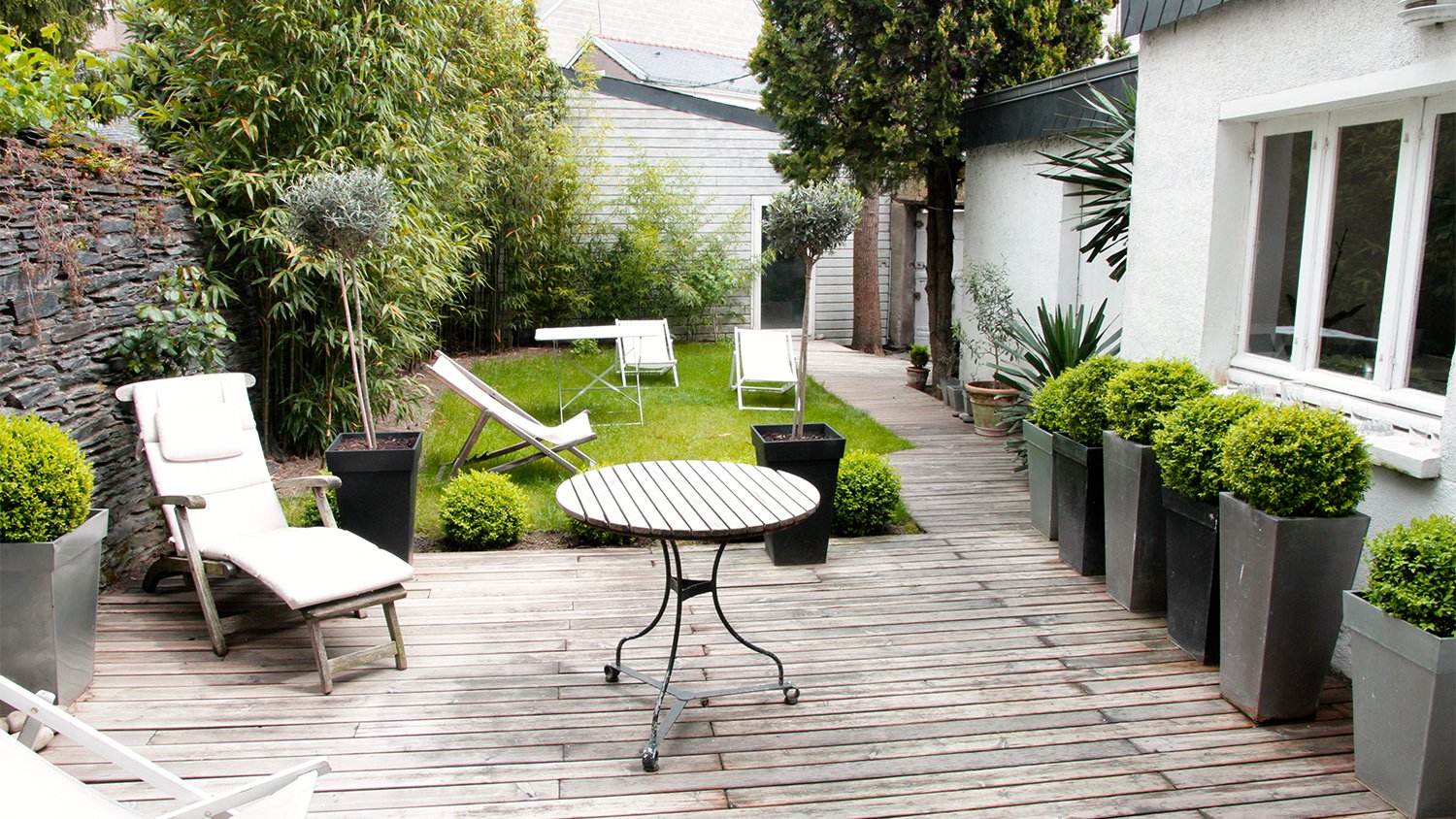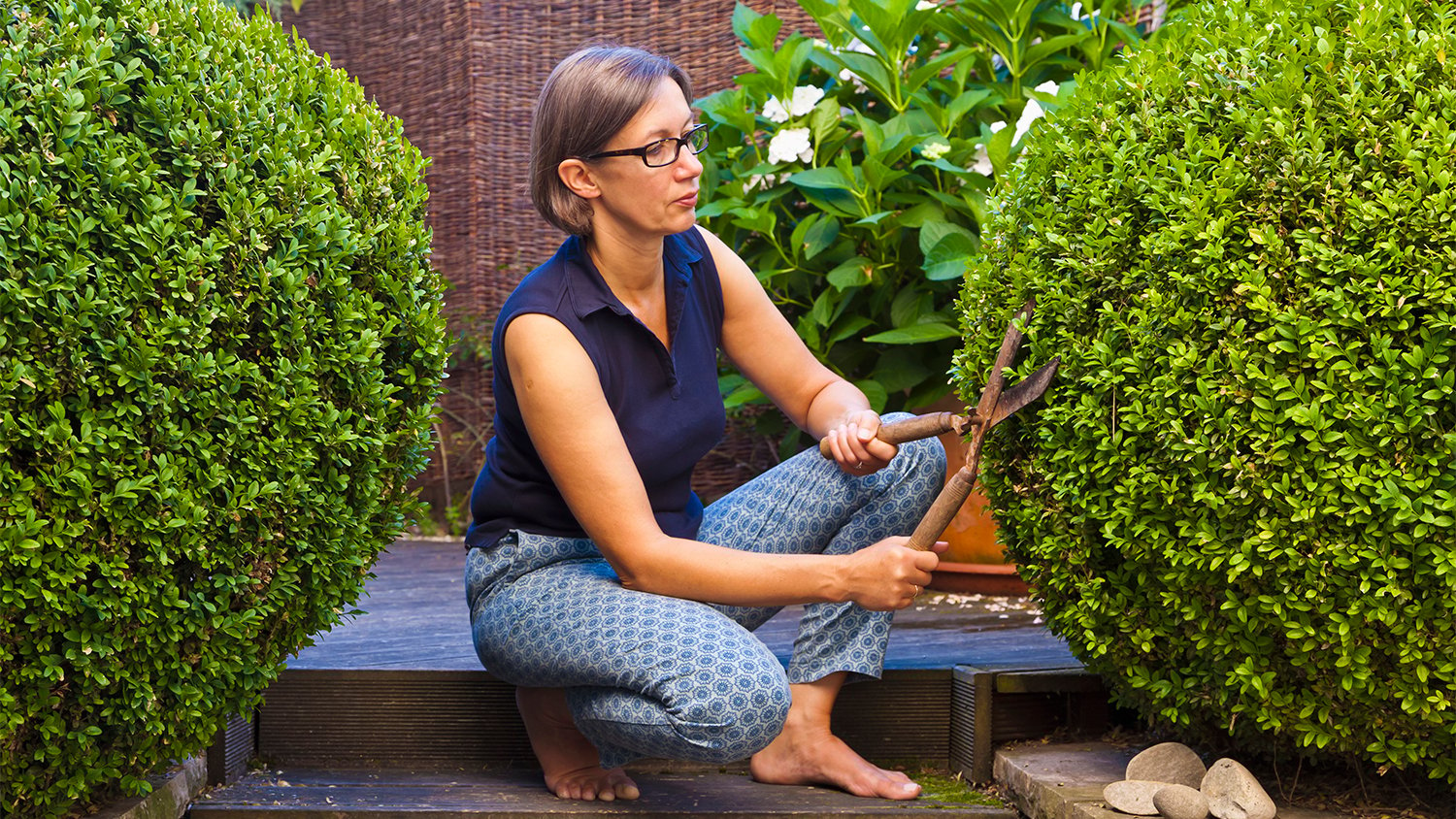
What are average sod installation prices? Learn how much sod costs in Atlanta, GA, based on factors like square footage, land prep, land condition, and more.
There's no need to hedge your bets against these dependable shrubs


Even the most whimsical, wild, and wispy garden ideas could use a bit of structure from a trustworthy evergreen shrub. Boxwoods make up about 70 different species of perennials, each of which grows into unique shapes and thrives in a range of climates. You'll find these iconic decorative shrubs everywhere, from Versailles to a suburban poolscape, and lucky for you, they're both versatile and easy to maintain. Here are 16 tips for landscaping with beautiful boxwoods.
Of the 70 members of the Buxus genus, each boxwood species has a unique personality. You'll find boxwoods that grow faster than others, range from pale to deep green, and grow in a range of heights, widths, and shapes. As we'll mention below, some love hot and drought-prone climates, while others prefer humid and hot climates year-round. Despite their differences, the majority of boxwoods enjoy:
Full to partial sun
Well-draining soil
Neutral soil pH
High-nitrogen fertilizers
Pruning in late winter and early spring
You can also flex your creative gardening muscles and mix-and-match boxwood shrubs for a multi-leveled or textured look.
While we know boxwoods for their evergreen, perennial hardiness, it's important to choose a species that will thrive in your region. Begin by familiarizing yourself with the USDA hardiness zone map that marks the dates of the first and last frosts. You'll notice at the garden store that some boxwoods prefer zones six through eight—the southern half of the country—while others prefer the colder northern regions.
It's easy to latch onto the highly formulated English gardens from a Jane Austen book when we think of sculptable shrubs like these. Whether planted in movable containers, planted in lines, or left to mark the corner of your garden, boxwood designs can add just a hint of elegant structure to a garden without the drama. For example, keep your wildflower garden wild and unruly, but line it with a border of two- to three-foot boxwoods to highlight its beauty.

Boxwoods are often seen as an excellent foundational plant—meaning you can line sections of your landscape with deep greenery and layer color on top. Add a string of either short or tall boxwoods along the edge of a fence, gate, or property wall. The boxwoods act as a backdrop to a flower or veggie garden while also designating space between one area of the yard and the next. Include a line of daisies, roses, or dahlias that add a new pop of color each year against the dense green.
Similarly, boxwoods showcase everything that hardscape elements bring to your yard. Back a grouping of boxwoods against a retaining wall, create a bordering between your yard and the poolscape or frame the driveway with an opening for your walkway. Boxwoods also create more depth around water elements like ponds and fountains, patios, and seating areas.
One of the best perks of such a structured shrub is that you can use it to add shape to a yard without fences of hardscape elements. Space out both a small and expansive landscape by marking the start of a garden or pathway with two boxwoods. Delineate a reading, coffee, or dining nook off the back of your yard or beckon guests to a hidden Zen garden or koi pond.
Dense boxwood plants are not just about showcasing areas of your landscape. They do a fine job at hiding necessary eyesores as well. If you don't love the areas underneath your porch, boxwoods act as a natural curtain that requires little upkeep. You can also spruce up the base of your home to cover your foundation or the garbage-bin storage areas.
Boxwoods are also excellent shrub candidates for planting over your septic system in your yard. It's important to stick to shrubs with shallow roots like these that prevent erosion.
If you live in an area with a high deer population, you're likely tired of them chewing your flowers, veggies, and shrubs down to the root. Luckily, boxwoods contain compounds that deer detest. This will hopefully scare them away from snacking in your yard, especially when you use boxwoods around the perimeter of other nibble-prone plants.

The eye-catching shape and dense greenery of boxwoods make them highly decorative and successful in pots and container gardens as well. Just make sure you choose a well-draining soil that doesn't hold too much water after a rainfall. Add the potted boxwoods to your entranceway, leaving the edge of your patio, or surrounding a reading bench in the flower garden.
Keep a sprightly pop of green along the windows all season long by adding them to a window box or in small pots along a sill. Most boxwoods do fine in partial shade, so you're still in good shape if the angle of the sun doesn't hit your windows at all hours of the day. Small varieties, such as Dwarf English Boxwood, only grow between one and two feet tall. Let them grow wild in their pots or trim the edges for a more tailored look.

Evergreen shrubs like boxwoods benefit from pruning in the late winter or early spring. Remove any dried-up or discolored branches from the former season, as well as a thin layer of new growth.
As much as you'd like to keep your boxwoods that perfect rounded or square shape, avoid over-pruning, especially in mature plants. Overdoing it will encourage dense growth and eventually block the sunlight from the center of the plant.
As much as boxwoods make a great background accent, they can also act as the star of the show as well. Boxwoods are excellent candidates for both low and high hedge mazes due to their growth consistency. Incorporate a circular or rectangular pattern at the center of your flower garden to create a classical look in your backyard.
Few things can help beautiful boxwoods stand out more than a layer of rich, contrasting mulch. The right mulch will make your entire planting area look fresh and cared for. You can plant flowers in mulch, using it to surround and highlight your boxwoods and other feature plants. To get just the right product for your needs, reach out to local mulching companies near you for help.
Homeowners and landscape designers love boxwoods for their strong, anchoring presence. But too many of them can make gardens seem one-note. Instead, consider mixing in different types of ornamental grasses that are lighter in color, have wispy textures, or otherwise contrast with your boxwood plants. Choosing the best prairie grasses for landscaping can add contrast in color and appearance, giving your setup a fresh, unique look.
Lollipop boxwoods are trimmed as topiaries, with a large, round ball of greenery at the top of a single thin stem. You may have seen these distinctively shaped boxwood designs in containers or featured in manicured gardens—they’re hard to miss! Some people like the stark, airy look of lollipop shrubs. But you can also soften the look or add visual interest by planting smaller, contrasting plants underneath, such as perennials and mosses.
As long as you maintain your boxwood species' preferred water and sun levels, boxwoods are actually quite easy to maintain. Still, the early pruning process and finding that balance between shaping and hacking apart the poor thing can be tricky. Contact a landscaper to help shear the shrubs in your early days of boxwood exploration and offer long-term care tips.
Ginny Bartolone contributed to this piece.
From average costs to expert advice, get all the answers you need to get your job done.

What are average sod installation prices? Learn how much sod costs in Atlanta, GA, based on factors like square footage, land prep, land condition, and more.

The cost to remove a boulder depends on the size, location, and equipment needed. Learn the average boulder removal cost and how to save money on removal.

Leveling your yard can help with drainage and prevent damage to your home. Learn the cost to level a yard in Atlanta, GA, and what factors can affect the price.

Erosion can affect anyone who lives on a hillside, but it’s a particular problem for waterfront property owners. Stop erosion in your yard with these tips.

There are reasons to grade or slope your yard beyond aesthetics—drainage is the main one. Read on and learn how to have an informed discussion with your pro.

Boulders can make a statement in your landscape, from retaining walls to decorative features. This guide breaks down how much landscape boulders cost.